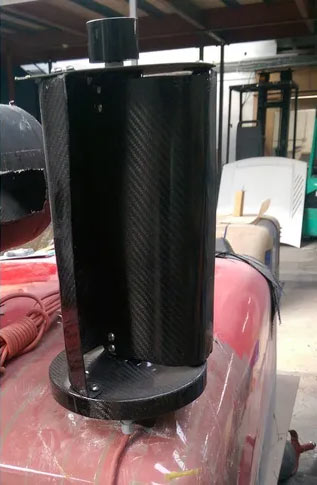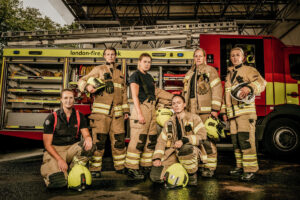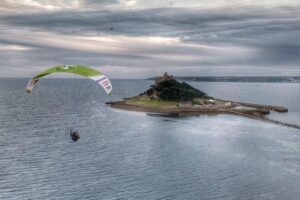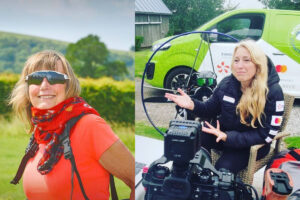Not all projects come to pass - working on Ed Stafford's planned attempt to cross Antarctica
"Working with Steve Holland and his associates was fun and easy. They draw from a wealth of experience and are good guys too. Of course I’m gutted that we failed to get the corporate sponsorship needed to go ahead with the expedition but the planning and technological research was hugely enjoyable and fascinating in itself. If our paths cross again in the future on some future daft venture or attempt then that would be great."


In January 2016 Lt Col Henry Worsley unfortunately died very close to becoming the first to achieve a solo unsupported and unassisted crossing of Antarctica. He was a seasoned polar traveller who so nearly achieved his goal. This showed not only that such a solo crossing is potentially achievable but also that it is at the limits imposed by the established technology, techniques and practices.
Many people, even within the ‘explorer’ community, were not aware that a crossing of the nature attempted had not previously been achieved solo and the media profile created by Henry Worsley’s untimely death highlighted that it was still there to be done.
Unsupported means no pre-placed supply dumps or air drops or other such interventions that provide food, fuel or spares part way through the journey.
Unassisted means that no aides such as mechanical propulsion, sails or kites for harnessing wind power are employed. All forward movement is to be man (or woman) powered.
A Seed is Planted




We had not long completed a specialised carbon fibre super-lightweight but strong race wheeled/ski buggy for a race up an ice road in the Yukon. The philosophy of the user who commissioned it was to be able to stop and be sheltered very quickly without having to set up a tent. He could then sleep for twenty minutes, get out and push on. This tactic of short naps and some longer sleeps of a couple of hours is well established in multi-day adventure racing. If you are used to it, napping can be very effective and minimise static time. That having been said such races are rarely longer than 4 or 5 days long.
The Ice Road race that year was plagued by bad weather and the course was altered. Although not the race experience intended, it did provide useful feedback on how the buggy performed. The transition from wheels on the ice to skis on the snow worked very well with no adjustments required. The racer could be sheltered from the weather, laid out flat comfortable in under a minute. The cooking station was very effective without any wind to deal with. The whole unit warmed up quickly with a person inside. The harness mounted pouch just behind the racer allowed for easy adjustment of clothing levels without stopping. The unit was very stable in head and cross winds. A downside was condensation which could be dealt with by partially opening the door – not an issue if parked nose into the wind.
Such a buggy seemed to fit in with Ed’s thoughts on using a different sleep pattern and making use of the 24 hour daylight and it became a key element in defining the approach to the problem.
The buggy structure is a carbon fibre sandwich as employed in aerospace, Formula One racing and other high performance applications. The material is placed in the mould and then cured inside a vacuum bag at elevated temperature.


The Traditional Approach
Great Britain has a proud tradition of Antarctic exploration. A few Norwegians seemed to have ventured that way as well. They have published detailed accounts, made films of their exploits or were around and willing to discuss the idea. Key amongst these were Ran Fiennes, who with Dr Mike Stroud completed the first unsupported crossing of the Antarctic Continent but as a pair, Felicity Aston who was the first woman to cross Antarctica – with supply drops but as a magnificent solo effort gave very useful advice on routes. Ben Saunders, through the expedition website of his Scott expedition, provided a wealth of technical information on skis, bindings and numerous other issues of detail that are important.
All of these expeditions, and pretty much every other man haul expedition have features in common. Having set off for the day with a packed sled, weight depending upon whether the venture is supported or unsupported, the sled hauler will keep moving, other than very short breaks, for up to 12 hours. Stops, when working hard are an opportunity to cool down very quickly, for any sweat to freeze and to stiffen up nicely. Food is generally high energy snacks eaten unheated and drinks will be from a flask prepared that morning. This sustained effort with less than ideal food and liquid intake puts a big strain on the body.



The energy available from a day’s rations invariably does not match those expended, the body making up the deficit from its own fat stores and when these run out, from its protein. Those planning a long man haul get ‘Antarctic ready’ with a feasting period in the UK and leading up to the departure point to build up their fat stores.
The daily cycle of haul, set up camp, refuel, sleep and strike camp is repeated. The load each day gets lighter as fuel and food are used but the man hauler will also be getting gradually weaker. Exacerbating this issue is the fact the Antarctic Plateau is mostly at about 10, 000ft and a crossing means gaining that height early on with the sled nearly at its maximum weight. This climb onto the plateau has been responsible for some staggering energy usage figures of 12,000 calories a day for days at a time.
This traditional approach and daily cycle has worked well for many years and for supported expeditions is quite comfortable. Those using kites or sails to harness the wind can cover much greater distances in favourable weather. This reduces both the energy used and the overall time on the ice. Factored in, this allows a lighter starting load and generally all the maths moving in your favour. For unsupported and unassisted man haulers the maths is against you and by the end of the expedition the hauler will be very depleted, and of particular danger for solo travellers, their judgment and ability to assess their own condition can become impaired.
Walking the Antarctic
The project became ‘Walking the Antarctic’ following on from the branding of Ed’s Amazon exploits. This over-ruled my working title of ‘Antarctica TraversEd’ – this was too serious a proposition for word play!
It is important at this point to establish timescales. The first discussions on this took place in late April 2016. The next Antarctic summer season was due to open towards the end of November 2016 and we had no idea if anyone else was considering an attempt. Preparing an attempt, even by the traditional approach, takes time to raise the sponsorship, get equipment, plan and train so it was unlikely that many, if any, would be able to respond quickly enough for the 2016/17 season. The season after however would be a different matter and so there was pressure to take advantage of this opportunity. There were other factors that put pressure on the timescale not least of which was Ed’s plan to get married to fellow adventurer Laura Bingham in the September and some filming obligations which were also a means to make a living during what was going to be an expensive period – certainly until sponsors were sorted.
Prospects for Change
Wheels vs Skis
Skis and sledges do not slide as you might think they would in the Antarctic. The ice is generally so cold that you do not get the localised melting under pressure that allows a glide. Ran Fiennes described man hauling at the start of an unsupported expedition as like pulling three grown men, sitting in a bath along a beach. It is reasonable therefore to assume that that same bath on the right wheels would be a lot easier to pull. There are precedents for the use of wheels on the Ice cap with motorised vehicles and more recently pedal power with fat bikes and modified tricycles. There would be days in which wind-blown snow would make the wheels unusable and the ski element would come to the fore but on days with a hard packed and cleanish surface the prospect of big mileage days was tempting.
There were questions in our minds about obstacles such as sastrugi – fields made of waves in the ice carved by the wind but as an engineer the first consideration was to try and quantify the potential benefit and compare wheels and skis.




Taking ran’s comments about pulling on sand, we designed a frame that would allow us to use different diameter wheels and different tyre thickness. This could be loaded up with concrete slabs and the forces required to initiate and then maintain movement would be recorded. We had three different wheel types to investigate the trade off between ground pressure and rolling resistance.
Having done that we would be able to remove the wheels altogether and attached a pair of skis, measure the loads and compare. I wasn’t too happy with how representative the skis would be and we didn’t have time to sort out sled runners. Luckily Ran responded to my request to see what he had from earlier expeditions and I found myself in the archive of the Royal Geographical Society booking out what was actually Mike Stroud’s sled from their record setting Antarctic crossing. That test would be ready to go after some key meetings.


Expandable Space: The inside of the sled would be tight, especially early on with a full load of food. To be able to expand the living and storage space on an extended stop would be useful. We looked at small awning, permanently attached around the door of the sled. Assisting in the design of this was Precision Stitching in Nottingham who have been faced with many novel projects in the past and this was up there with the best of them.



Power: Flexible solar panels have been placed onto or next to tents on expeditions for a while now and they are dotted about at fixed weather stations throughout the continent. Apparently, unlike batteries that do not like the cold, solar panels actually can outperform their normally stated specification in such conditions.



Although Antarctica has 24 hour daylight it also has bad weather and the sunlight levels will not always be up to the task. The other thing about its weather however is that it is the windiest continent on earth and it makes sense on a basic level that when the weather is too bad for solar power there will be plenty of wind around and that too could be harnessed by some form of compact turbine.
A look around the web showed up many interesting variations. Those that were too propeller like were dismissed as being too fragile and could possibly lead to issues with the ‘Unassisted’ aspect of the attempt. It would be shame to go through all that effort to have people dismiss it with comments about being propeller driven. Vertical axis wind turbines looked more promising and I eventually came across a compact unit which was actually used at static weather stations in Antarctica to supplement solar. The size was good, the weight was not. One was ordered and it was taken apart and basically reversed engineered using the existing metal parts to make moulds for their own carbon fibre replacements. The carbon version was much more like it and would be mounted on a rear corner of the buggy roof, away from the solar panels and able to catch the wind from any direction.



The First Formal Project Meeting
This was held at the offices of Tigress TV in Bristol. They were the production behind Ed’s Naked and Marooned programmes for Discovery and were interested in this new venture. This meeting allowed us to get into other issues such the route selection, testing, training and what other research Ed would undertake in parallel to the development of the Antarctic sled/buggy.
Although outside the scope of this document it is worth touching on the other novel aspects Ed was looking into.
Polyphasic Sleeping – this is sort of what happens on multi-day adventure races with power naps rather than extended sleep periods. There are proponents of this approach in the medical community and it is certainly interesting. Longer sleeps and catch ups could be taken when the weather dictated that you were staying put.
Ketogenic Diet – per gramme, fat stores more calories than carbohydrates and its release is more gradual. Would adapting to such a carb free diet beforehand allow weight to be saved on food and possibly avoid the spikes and drops in energy that can come with carbohydrates. A contentious issue but again there were those out in the medical community who were fans.
Training – Ed is the first to admit that he has had no Polar apprenticeship. The basic skills can be learnt and the advice of many more experienced practitioners was available but this was a concern. One issue that was not a concern was the isolation that has affected some people quite severely. Ed’s first TV venture after his Amazon journey was to spend 60 days completely alone on a pacific island. In today’s hyper connected and crowded world this is a very rare experience and he coped well and showed sound judgement even when deprived of food and shelter.

Route Selection - What record were we going for?
A full traverse from ice edge to ice edge was not a realistic proposition in the time period that air support is usually available. You have to get into Antarctica and then wait for a flight out to your start line and ensure that your pick up time is planned with some contingency. The distances involved in traversing ice shelves would add to the food budget, wear and tear and the probability of injury and accidents increases with every day on the ice. It should also be considered that the extent of the ice shelf varies from season to season so as a record it would be clearly defined in some aspects but not in distance covered.
The logical alternative was to traverse the continental land mass. This required starting and finishing just far enough out on the ice shelves that there was no question that you standing above ocean and not land. Within this scenario there were different starting and finishing points.

Hercules Inlet is near the Union Glacier base created and used by ALE (Antarctic Logistics & Expeditions) for insertion into Antarctica. This is convenient and used for many South Pole attempts but was further to the Pole than strictly necessary. Further along the Ronne/Filchner Ice Shelf, in land from Berkner Island is a zone dubbed ‘The Messner Start’ from the location used by Reinhold Messner in his own Antarctic venture. The finish line would be to any point above the sea on the Ross Ice Shelf.
A great source of information on the ‘Messner Start’ and the Leverett Glacier was Felicity Aston. Now resident in Iceland, she very forthcoming with help and advice on the ground being considered.
To get back down from the Pole means descending one of the many glaciers. The obvious choice would be the Leverett Glacier. It is a long but steady descent and has a prepared trackway used by motorised ice trains making deliveries from Scott McMurdo to the Pole.
A more direct route would be to descend the Shackleton Glacier. This would require cooperation from ALE. It has to be assumed that the man-hauler would be very low on energy and resources by this point and the need for rescue and evacuation before reaching the ice shelf is a distinct possibility. A suitable landing zone would have to be identified to make this a viable choice.

Antarctic Logistics & Expeditions:

Some Key Outcomes from the Meeting with ALE:
Wheels – up on the plateau and if the conditions were favourable that season there could be some advantages. Most cycle or tricycle based pole attempts start up on the plateau. The big issue however was the climb, in the most heavily laden condition, up onto the plateau. The chances of the wheel/ski combination surviving the climb would not be good.
Messner start – logical and a better start than a finish.
Leverett vs Shackleton – for the season in question the Americans had put a temporary base into a shoulder the Shackleton Glacier and with it had provided suitable facilities for air support. This made the Shackleton viable for extraction and so a logical choice for the descent to the Ross Ice Shelf.
Electrical snow melting and cooking – to provide support ALE would insist on a traditional but compact fuel burning stove with fuel for seven days was carried. It could take this long to arrange and carry out an extraction in the event of the failure of the electrical system.
Timescales and Costs: It was confirmed that the only practical means for the crossing was to cover the continental landmass. The time in which air support was available would not span that required for a sea to sea crossing. Cost wise – just as expensive as you might think – the distances are huge and infrastructure fragile and transient by nature.



Progress and Pressures:
We could lose the wheels and change the base of the unit into a profile that support two sled runners. This would take time we didn’t really have but that was the nature of this project.
We would need help on the electrical system. Thankfully one of Ed’s longstanding supporters was prepared to help and they were most welcome. Jaguar Landrover had committed a sum that allowed their Research Department to get into the issue of the wiring loom and to look at alternative to the effective but worryingly cheap mug heater for the snow melt tank.
Other, much needed, sponsorship was proving harder to come by. There was a lot of interest from the right sort of brand partners but the compressed timescale was not fitting in with their decision taking procedures. Discovery Channel were supportive but were also just as keen that Ed start planning for a new series more related to their previous projects together.
In the September there was the little matter of Ed getting married to fellow adventurer Laura Bingham. As would be the case for anyone, this requires time, emotional energy and funding – all of which would detract from that available for the Antarctic project.

Ed gets to marry fellow adventurer Laura Bingham.
His plans and risks are no longer just his own.
Fitting in testing and training was also a challenge. All the vehicle slots on the ferries to Iceland were full. Felicity Aston had garnered the support of Antarctic Trucks and their guides to facilitate effective but safe testing but it was not to be. The network of expedition contacts was fired up to sort out logistically suitable high altitude snowfields in the Alps with a Swiss location proving the best looking.
The team at JLR proved to be a Godsend and it was great to work with professionals who shared a focus and with such resources to hand. The meetings were held around a glass fibre shell in the middle of their development facility, surrounded by dazzle camouflage coated prototype vehicles that won’t hit the market for a year or so. Things were progressing well.
On the sled, a number of new developments were in hand. The best sled runners had been sourced, internal stowage nets sorted. The solar panels had been built and supplied to our specification, airflow through the body to compensate for condensation had been designed. For the snow melt we had also developed the lightest titanium and carbon fibre shovel known to man, complete with titanium spike for breaking up ice.



Calling a Halt
You have to work on the assumption everything will come off, so we were all full steam ahead when the decision point came. To secure a place for Ed and all of his equipment on the first flight of the season into Union Glacier there was a deposit to be paid.
This coincided with the need for paying out for field trails in the Alps, specialist training and a list of other hardware items. The potential sponsors were still making the right noises but they would just not be able to sign on the dotted line in time to meet these deadlines.
Having lived the project and shared in Ed’s passion, all of us involved were disappointed when the call came to down tools. That having been said, we have worked on many expeditions over the years and know that there are more that don’t see the light of day than do and supported such a prudent decision.
The Legacy
Having taken the hit and disappointment on this, it was also a release of pressure for Ed. Discovery Channel were soon onto him to plan his next TV series which would be released as ‘Left for Dead’. Ed and Laura have also since started out on one of life’s great adventures with the birth of Ran Stafford.
Technologies developed during the ‘Walking the Antarctic’ project have worked their way through to the latest versions of the running buggies – now renamed ‘JogPods’. The solar panels, internal storage combinations, deployable chimney and folding rear door/seat combo have been used on units for Rosie Swale-Pope and for the round the world charity fund raiser ‘Run Geordie Run’.
No one has yet needed the snow melt tank option – this was always going to be a niche within a niche, but there all sorts of projects and expeditions being planned out there so never say never.


To see more on the features available for Jogpods Click Here


